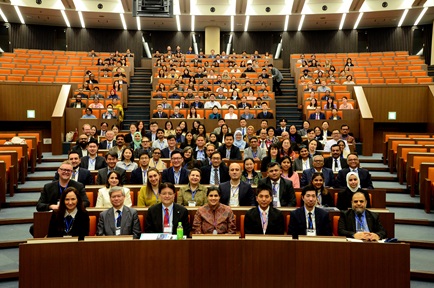The business of CEO media appearances
They appear quite frequently – interviews with CEOs, not even necessarily about the company or their product, but also about their personal lives.
By Jingoo Kang

They appear quite frequently - interviews with CEOs, not even necessarily about the company or their product, but also about their personal lives. Research shows it is not just ordinary Joes who read these; potential employers and their significant stakeholders pay close attention to such news coverage.
Some studies suggest that a CEO's media appearance may benefit the company's financial performance and stock price. When the media covers more about a company, investors will be more aware of it and pay more attention to its stocks; thus, from a shareholder's perspective, the CEO's media appearance is a good thing that should be encouraged.
While media appearances may help some narcissistic CEOs satisfy their emotional needs, is there also benefit to the CEO? This is especially bearing in mind that media events such as TV interviews require CEOs to invest time and resources to prepare thoroughly for these sessions; any mistake during the appearance may cause not only embarrassment but also substantial damage, to the CEO and the firm.
Professor Andy Young Han Kim of SKKU Business School (South Korea) and I looked at the benefits to both company and CEO - does media visibility also benefit CEOs; and if it does, how does it impact the company?
We extracted data on 4,452 CEOs from 2,666 US firms from the Execucomp database and collected 104,129 news articles and 6,567 CNBC interviews in which these CEOs were featured.
We found that increased media visibility of a CEO leads to an increase in his compensation the following year. The increment is more significant for CEOs of smaller companies than for CEOs of larger companies. This is because smaller companies generally have lower visibility, thus media appearances of the CEOs have a stronger visibility-enhancing effect for the CEO; this higher visibility enables the CEO to demand for higher compensation the following year. By contrast, CEOs of large firms are already well-recognised and highly visible; hence the incremental visibility-enhancing effect of media appearances for them will be smaller.
However, this media valuation of the CEO is contingent on the performance of the CEO's company. A company demonstrating strong stock market performance provides positive supporting evidence of the CEO's real quality, in turn strengthening the CEO's bargaining power for more, and better job offers.
Our studies also show that in some cases, this bargaining power is not always exercised. CEOs who own a substantial amount of company equity often identify closely with their organisations. The monetary and psychological effects of this sense of ownership often render them less motivated to extract higher compensation from the company. Founder-CEOs also often do not leverage on their higher visibility. They identify themselves strongly with the company they created and are even willing to sacrifice their interests for the wellbeing of the companies; and hence tend to work for their companies at a lower salary compared to otherwise similar non-founder CEOs. Furthermore, founder CEOs' emotional attachment means they voluntarily restrict their mobility and choose to remain with the companies they created.
DOUBLE-EDGED SWORD
Communications departments in companies are often keen to obtain media attention for their company and their senior management, as it is generally believed that such media appearance improves shareholder value. Our studies suggest that they also need to be aware that the visibility of their CEO (or any of its key management members or staff) is a double-edged sword. While a CEO's media appearance may enhance the visibility of the firm in the eyes of investors and have a positive effect on shareholder value, at the same time it may also enhance the visibility of the CEO in the eyes of outside employers and strengthen the CEO's negotiation power. This could lead to higher demands for compensation the following year by the CEO or even the eventual departure of the CEO for greener pastures, resulting in a negative effect on shareholder value.
This does not suggest that companies should stop arranging media coverage for their companies and CEOs. Companies need to work out a simple equation - is the stock value created by the CEO media appearance greater than the increased compensation demanded by the CEO, or the loss due to the attrition of the CEO? In the end, the collective effects to the company need to be analysed as a whole.
While our study is about CEOs, its general applicability highlights the role that the media today play in the labour market - for other levels of employees too.
Traditionally, only a few people have the opportunity to appear in the media; now technology has made available many new alternative outlets that go beyond a curriculum vitae, referrals or even interviews. Job seekers can post on ( and likewise, potential employers and talent hunters can look on) LinkedIn, Facebook and other apps like Instagram or Twitter to collect data about, and assess the candidate's professional and personal profiles. As with CEO visibility, an employee who is more visible in the labour market generally has a stronger bargaining power with their current employer, whether for pay or benefits, or via job offers from other potential employers.
Our study directly linking the media visibility of a CEO to increased compensation underlines that this new job market strategy has become a staple. Media visibility for any employee is now a reality, and an asset they need to develop.
The writer is an assistant professor at Nanyang Business School, NTU. The research mentioned in this article is co-authored with Andy Y Han Kim from SKKU Business School, Korea.
Source: The Business Times, 16 August 2019
Source: The Business Times, 16 August 2019







